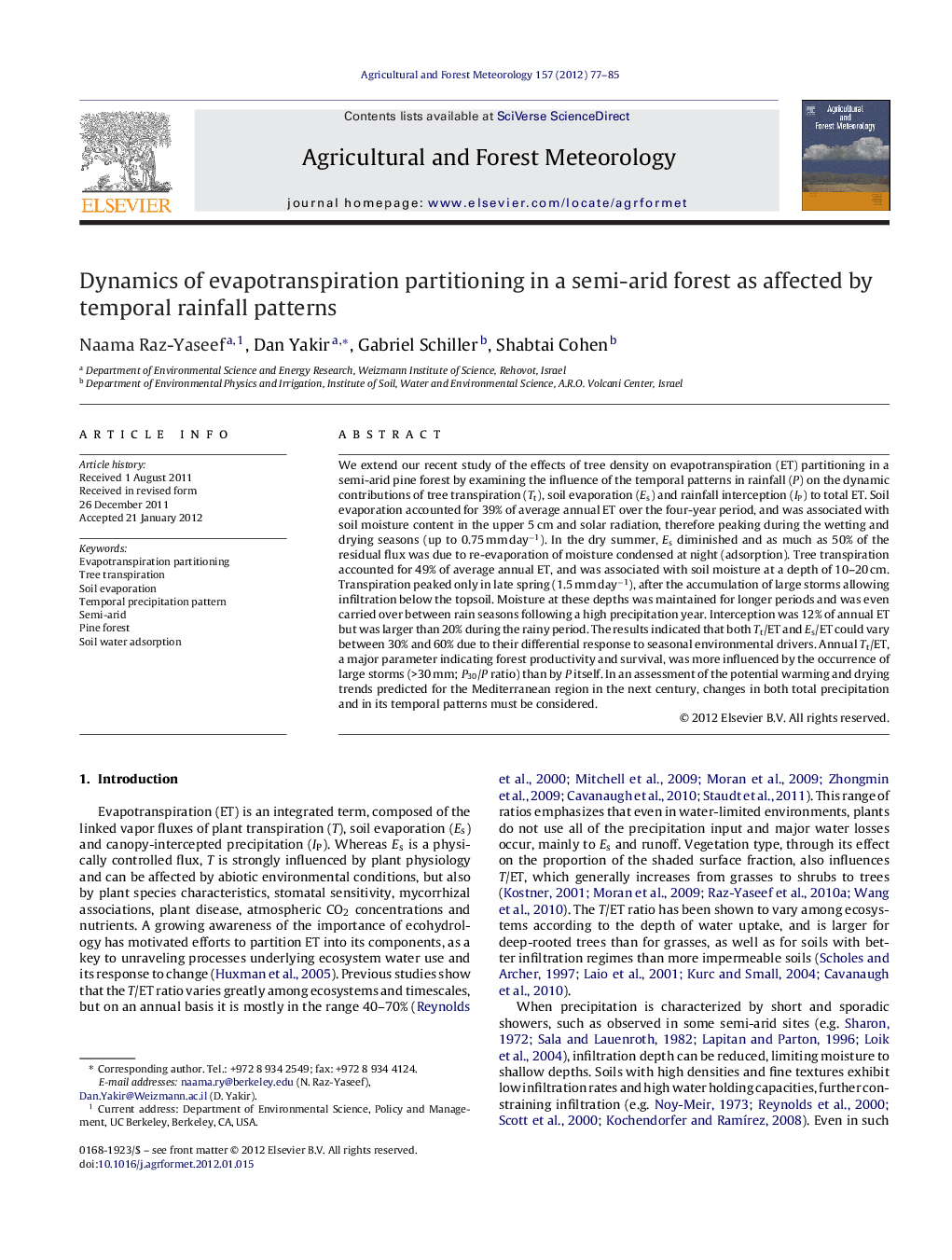| کد مقاله | کد نشریه | سال انتشار | مقاله انگلیسی | نسخه تمام متن |
|---|---|---|---|---|
| 82041 | 158368 | 2012 | 9 صفحه PDF | دانلود رایگان |

We extend our recent study of the effects of tree density on evapotranspiration (ET) partitioning in a semi-arid pine forest by examining the influence of the temporal patterns in rainfall (P) on the dynamic contributions of tree transpiration (Tt), soil evaporation (Es) and rainfall interception (IP) to total ET. Soil evaporation accounted for 39% of average annual ET over the four-year period, and was associated with soil moisture content in the upper 5 cm and solar radiation, therefore peaking during the wetting and drying seasons (up to 0.75 mm day−1). In the dry summer, Es diminished and as much as 50% of the residual flux was due to re-evaporation of moisture condensed at night (adsorption). Tree transpiration accounted for 49% of average annual ET, and was associated with soil moisture at a depth of 10–20 cm. Transpiration peaked only in late spring (1.5 mm day−1), after the accumulation of large storms allowing infiltration below the topsoil. Moisture at these depths was maintained for longer periods and was even carried over between rain seasons following a high precipitation year. Interception was 12% of annual ET but was larger than 20% during the rainy period. The results indicated that both Tt/ET and Es/ET could vary between 30% and 60% due to their differential response to seasonal environmental drivers. Annual Tt/ET, a major parameter indicating forest productivity and survival, was more influenced by the occurrence of large storms (>30 mm; P30/P ratio) than by P itself. In an assessment of the potential warming and drying trends predicted for the Mediterranean region in the next century, changes in both total precipitation and in its temporal patterns must be considered.
► We examined the temporal patterns of ET partitioning in a semi-arid forest.
► Tree transpiration was associated with the cumulative effect of rain events >30 mm.
► Soil evaporation was associated with moisture at the topsoil and radiation.
► The contribution of flux components to ET varied over the seasonal cycle.
► Assessing effects of climate change should consider temporal rainfall patterns.
Journal: Agricultural and Forest Meteorology - Volume 157, 15 May 2012, Pages 77–85